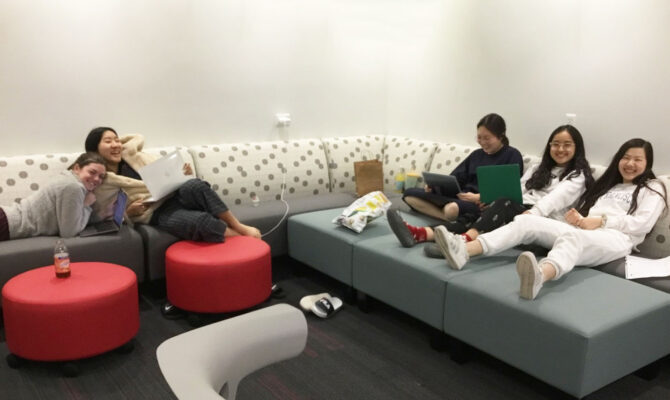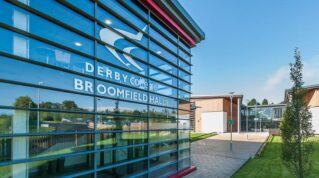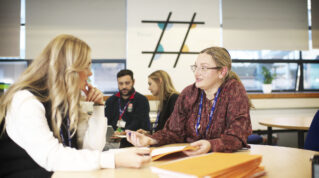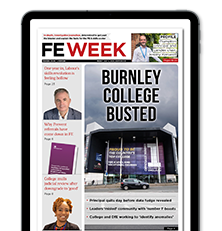For most secondary students, interaction with mathematics involves progression through the standard math curriculum — typically the higher-level sections of algebra, geometry, trigonometry, precalculus, statistics, and calculus. Students who enjoy challenge and variety sometimes participate in a math club, math circle, or competition team. These extracurriculars typically provide participants with the opportunity to individually solve problems in search of a correct answer, though certain supportive classroom and competition settings allow students to work together to address harder, more complex questions that require teamwork. Many of my students have successfully pursued degrees and careers in various science, technology, engineering, and mathematics (STEM) fields. Unfortunately, few of them actually use mathematics to determine a best course of action or to educate themselves about a non-STEM topic until they begin professional internships or careers.
Though I have taught and coached competition mathematics for over 16 years, my previous 15-year career as a control systems engineer found me working with and learning about optimization of locomotive fuel consumption, signal switching at television networks, air traffic path planning, and DVD manufacturing, among other applications. These experiences prefigure my goal that students learn about other fields besides mathematics, consider math’s applicability as a decision-making tool, and talk to each other in the process.
While it is possible to create small labs and explorations in the traditional math sequence that let students work toward these goals, SIAM’s MathWorks Math Modeling Challenge (M3 Challenge) [1] implements this on a larger scale. When I first learned about M3 Challenge, I reached out to some of my strongest students who enjoyed mathematics, were omnivorous in their interests, and could write and communicate effectively. The annual contest also inspired me to begin the process of launching a math modeling culture at my high school, the Emma Willard School in Troy, New York.
Apart from student curiosity and persistence, I have identified three important prerequisites for launching a math modeling culture in high school: a thorough understanding of the general process, competency with a basic tool set, and a multitude of interesting problems on which to work.
Although I spent the first part of my professional career developing mathematical models of dynamic systems, I was initially unsure where to begin in teaching the process. The Guidelines for Assessment and Instruction in Mathematical Modeling Education (GAIMME) report[2] and SIAM’s math modeling handbooks[3] (all free to view and download) helped me create a walk-through for my students. I would also highly recommend notes from the 2019 SIAM-MfA Math Modeling Workshop[4] for high school teachers, which draw on and distill these materials. All high school students are capable of browsing the internet to obtain information on unfamiliar topics, and Google’s suite of collaborative tools facilitates collective contribution to a problem’s initial mind mapping. While I do teach basic spreadsheet use for function exploration and data analysis in precalculus, I developed short workshops to familiarize my M3 Challenge teams with the processes of creating more complex formulas and charts and using random functions to simulate outcomes. I have also begun teaching MATLAB, which I particularly enjoy as it is a technology bridge that spans my careers. Because M3 Challenge is only open to juniors and seniors (sixth form students age 16-19 in the UK), I ask experienced seniors to provide new team members with a summary of their participation by breaking down, researching, analyzing, developing, quantifying assumptions for, and validating their model from the prior year.
What makes this all “real,” of course, is finding motivating problems on which to practice. These problems should be topical and real; it is even better when they touch on subjects about which the teacher can cheerfully admit to knowing very little! One of the nicest aspects of M3 Challenge is that both past competitions and the website[5] provide numerous different problems, all of which comprise a multilayered “story” whose relevance extends beyond the competition. One of my students who participated in this year’s contest[6] praised the topic’s real-world relevance. “I knew absolutely nothing about electric trucks and very little about charging stations before this experience,” she said. “I really enjoyed being able to apply my math skills while learning about new topics. Although at times the amount of data felt overwhelming, it was so rewarding to see all of our observations and calculations come together in the final product. I will definitely be keeping tabs on the evolution of vehicles and their environmental impact in the future.”
While my school’s teams have yet to make it beyond the second round of competition, student response has been remarkably positive. “Being able to apply the knowledge I’ve gained from my math classes to a real-world scenario really interested me, especially given that there wasn’t one concrete answer to each question,” another student said. “We could really apply the organizational and math modeling skills—as well as the communication and collaboration skills—that we used during this process to any field or numerical situation.”
The contest’s benefits seemed so clear that I suggested that Emma Willard offer a semester-long, project-based course in mathematical modeling for seniors, accessible to any student who has completed precalculus or an advanced algebra course that focused on functions. The course plan, which I developed with several colleagues, introduces students to the use of models to capture the behavior or most important aspects of a messy, real-world problem with many contributing factors. The class’s inaugural semester was set for the fall of 2020.
After introducing the basics of the modeling process, the course would allow students to practice defining problems, researching contributing factors, quantifying their assumptions, and developing and testing models. It would also emphasize quantitative writing and oral presentation skills, as these are important components of any high school curriculum or professional setting.
The class would culminate in an individual project that each student chooses for herself, with guidance from the instructor. Students were to decide whether experimental or empirical modeling is most appropriate for their problem and select from model types that correspond with both the problem and their level of mathematical experience. For some, the projects would bring depth and relevance to second-year algebraic models, such as those originating with exponential, power, sinusoidal, and logarithmic functions. Difference equations, smoothed polynomial or spline models, and probabilistic simulations would provide additional depth and challenge for students who have completed a year of calculus. Most (if not all) participants would already be familiar with Desmos or GeoGebra from earlier courses, and the plan was to teach and extend existing knowledge of spreadsheets. We hoped to even include MATLAB or Python if enough students had coding experience. As developers of a new course, the teachers would be learning from their initial model and changing it to incorporate novel data as it became available. While the plan was to utilize GAIMME-based rubrics to assess student models, there was an expectation that the process would require patience, critical thinking, and a willingness to regularly amend small details as necessary.

COVID changed everything in terms of the math modeling course plans. Our school closed in March 2020 like many other schools, and when school resumed in fall 2020 it was VERY different. The school rejiggered all year-long courses to be semester-long courses—it wasn’t a ringing success, but the goal was to limit students to no more than three classes a semester so that if we had to go online again students would not be dealing with videos and online learning for six classes, which was pretty miserable at the end of 2019-2020. Classes that were planned one-semester classes, including the new math modeling course, were cut altogether—despite having a curriculum, approval, etc. This has been the situation for the past two years.
What I have worked to do is to incorporate more math modeling into my precalculus and first- and second-year calculus courses. It has not been nearly as systematic or tool-focused as what we proposed in our curriculum, but it has still been rewarding. Students have said, “this made me feel like a real mathematician” and “this helped me draw on modeling skills I didn’t know I had.” It is definitely not the same, or as sustained, as the math modeling course planned prior to COVID, but this is where we are at this point (December 2022).
As a final note, I want to share the very specific experience of teaching math modeling to young women (Emma Willard is an all-girls’ high school). As one of my students observed, “an all-female team like ours is a rarity, and we have created a special sisterhood.” Despite the intensity of working within M3 Challenge’s regulated time window—which gives participants 14 hours in which to educate themselves on an unfamiliar topic and produce a substantive paper—my students found the process motivating, stimulating, and even empowering. By practicing regularly before the competition, the team developed a collaborative and supportive bond and became comfortable sharing and challenging each other’s ideas. As I stopped by during Challenge weekend to bring the competing students fancy coffee drinks and baked goods and laugh with them during “vibe checks,” I was struck by both the productivity and camaraderie in the room. At the end of the day, my students came away from M3 Challenge with an enhanced sense of math’s applicability to their future studies.
MathWorks Math Modeling Challenge 2023 – a contest for sixth form students.
Register by 24 February 2023; Challenge weekend is 3-6 March 2023.
Free to register and participate.
£75,000+ in scholarships awarded annually.
Acknowledgments: Special thanks to Caroline Albert, Laszlo Bardos, Judy Price, Chiara Shah, and Yoosong Song for their input and reflections.
Alexandra Schmidt has been a mathematics teacher at the Emma Willard School since 2014. She has taught mathematics at every level from fifth to 12th grade, prior to which she was an electrical engineer. Schmidt holds a Master of Arts in Teaching from Clarkson University and is a National Board Certified Teacher.
[1] https://m3challenge.siam.org/
[2] https://www.siam.org/publications/reports/detail/guidelines-for-assessment-and-instruction-in-mathematical-modeling-education
[3] https://m3challenge.siam.org/resources/modeling-handbook
[4]https://m3challenge.siam.org/newsroom/2019-siam-mfa-math-modeling-teacher-workshop
[5] https://m3challenge.siam.org/
[6] https://m3challenge.siam.org/archives/2020/problem

















Your thoughts